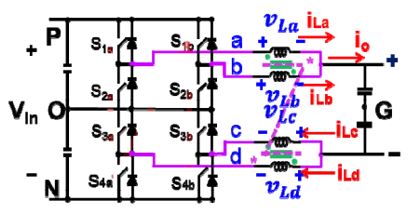LIBRARY
Modeling and Design for Integrated Coupled Inductors in Interleaved Three-Level DC-DC Converters

This paper focuses on the modeling and design of integrated coupled inductors in dc-dc conversion. Because of the full coupling of four arm inductors, together with their associated switching networks, inductors behave like nonlinear devices. This is beneficial in terms of containing the circulating current and minimizing the total output-current ripple. However, due to its complexity, it is difficult to directly analyze the coupling. Equivalent inductance analysis can provide a guideline for coupling design based on the current-ripple target. This has never been done before with such integrated magnetics. By using the concept of equivalent inductance, which was first applied for the two-level buck converter with coupled inductors, the coupled inductors can be decoupled mathematically in this three-level interleaved dc-dc converter. With multiple equivalent inductances defined within one switching cycle, the relationship between coupling and both inductor-current and output-current ripples will be established, and the benefit of coupling can be illustrated. Design guidelines for coupling are provided according to the requirements for inductor-current ripple and total output-current ripple.
The three-level dc-dc converter with integrated coupled inductors is shown in Fig. 1. The N-type interleaving method is applied for the two phase legs to reduce the output-current ripple. Two types of coupling effects—negative coupling to suppress the circulating current, and positive coupling to increase output-filter inductance—exist in the
integrated coupled inductors.
In order to design the integrated magnetics based on inductor-current and output-current ripples, the concept of equivalent inductance is adopted to analyze the complex effects of negative and positive coupling. Within one switching cycle, a number of piece-wise linear inductances are defined with different switching intervals. Through the analysis of inductor-current and output-current waveforms, the relationship between the equivalent inductances and current ripple can be established, and the two types of coupling effects in the integrated coupled inductors can be directly designed based on current-ripple requirements.
A prototype of integrated coupled inductors has been assembled and tested with three-level dc-dc converter hardware, as shown in Fig. 2. Within one switching cycle, the phase-leg output voltage is a three-level waveform, and the inductor current has a zig-zag shape due to the nonlinear inductance, as expected.






















































































